The birth of Lord Ganesha is one of the most beloved stories in Hindu mythology. It is a tale of devotion, misunderstanding, and ultimately, divine intervention. This story not only explains Ganesha’s unique elephant-headed form but also highlights the significance of duty, respect, and wisdom.
Goddess Parvati’s Creation
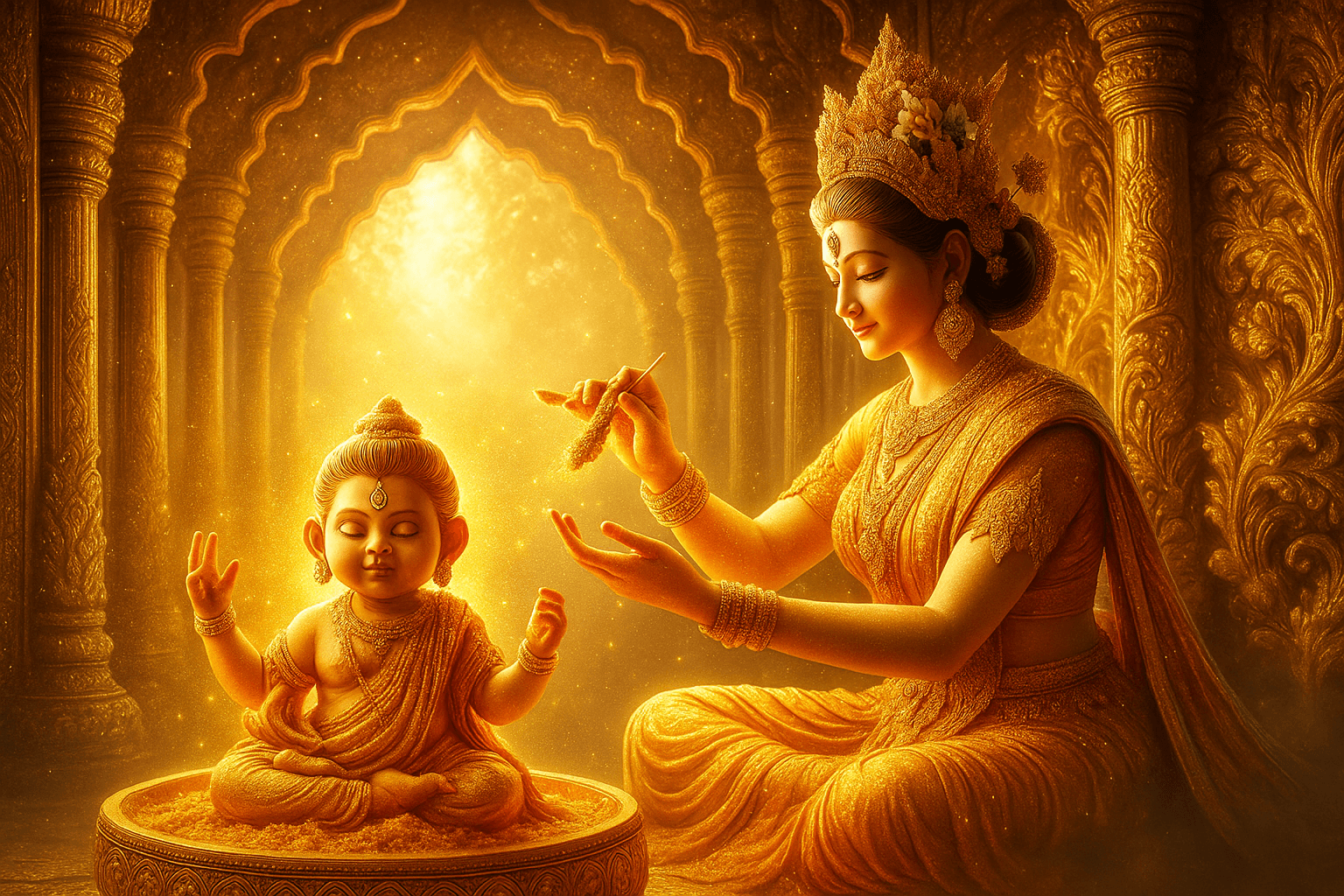
On a serene day in Mount Kailash, Goddess Parvati, the divine consort of Lord Shiva, longed for a companion to guard her chambers while she took her daily bath. Using turmeric paste from her own body, she sculpted a beautiful young boy. Infusing him with life through her divine powers, she named him Ganesha and gave him a special task—to guard the entrance and let no one in.
Lord Shiva’s Return
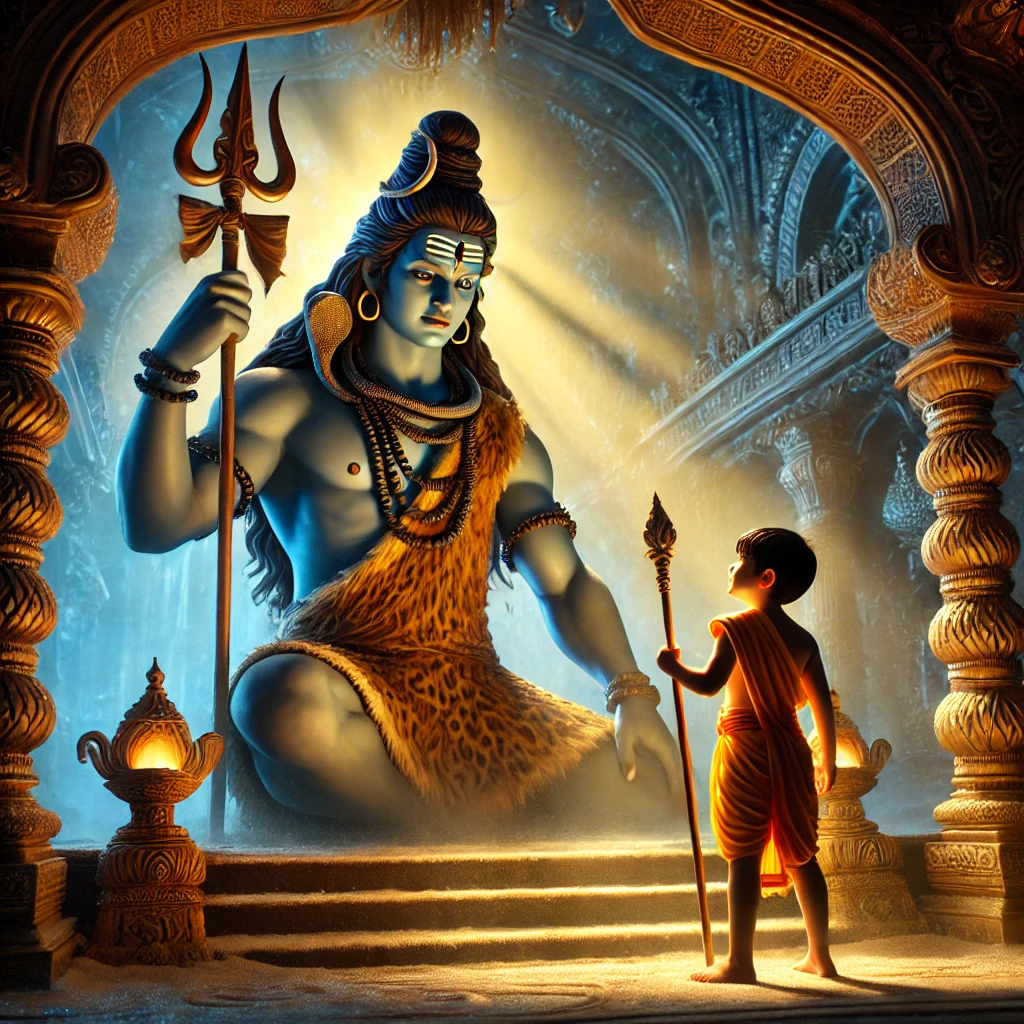
While Parvati was inside bathing, Lord Shiva returned home. Expecting to enter freely, he was stopped by this unfamiliar boy standing guard. Ganesha, following his mother’s strict instructions, refused to let Shiva pass. Infuriated, Shiva demanded entry, but Ganesha stood his ground, unknowingly challenging the great destroyer himself.
The Fierce Battle
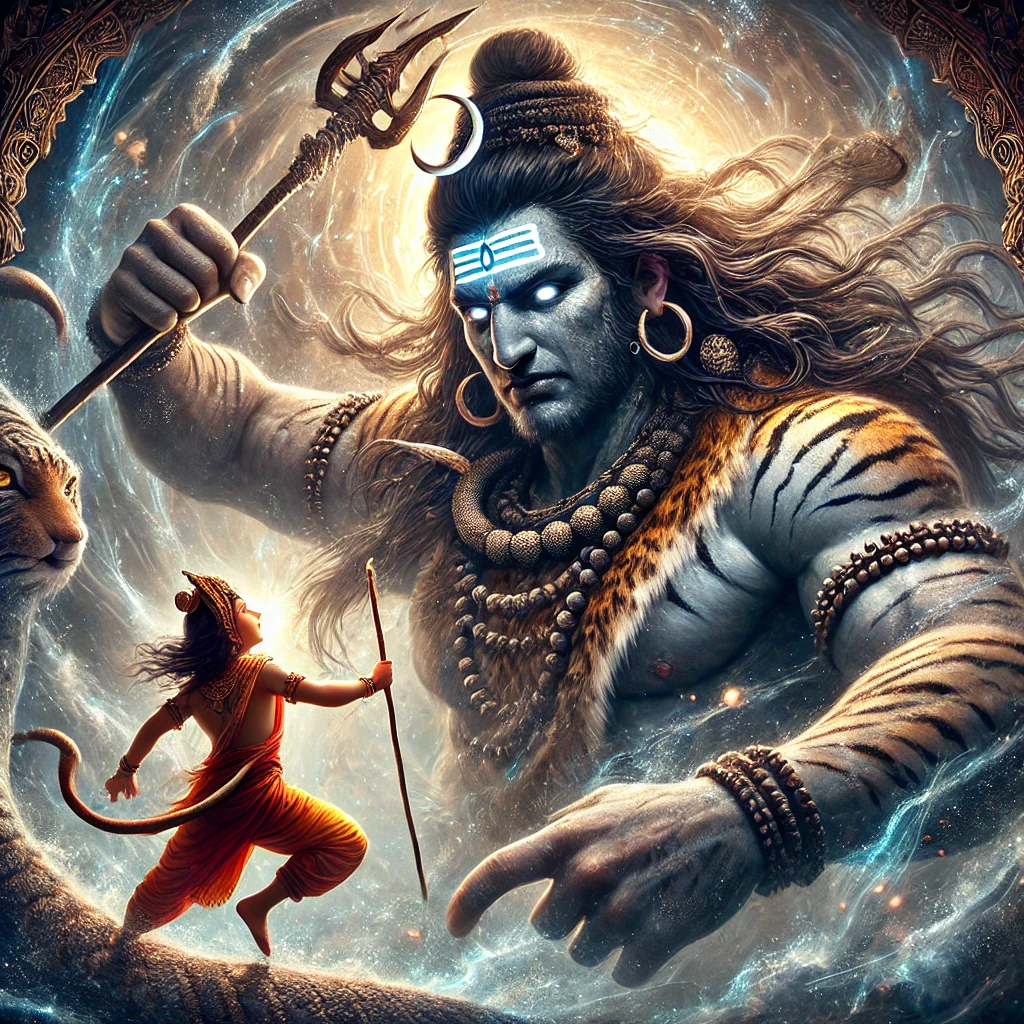
Lord Shiva, known for his temper, was not used to being disobeyed. His anger surged, and he tried to push past Ganesha. But the young boy, blessed with divine strength, proved to be a formidable opponent. This led to an intense battle where even the gods watched in astonishment as the child warrior held his ground against the mighty Shiva.
The Tragic Decapitation
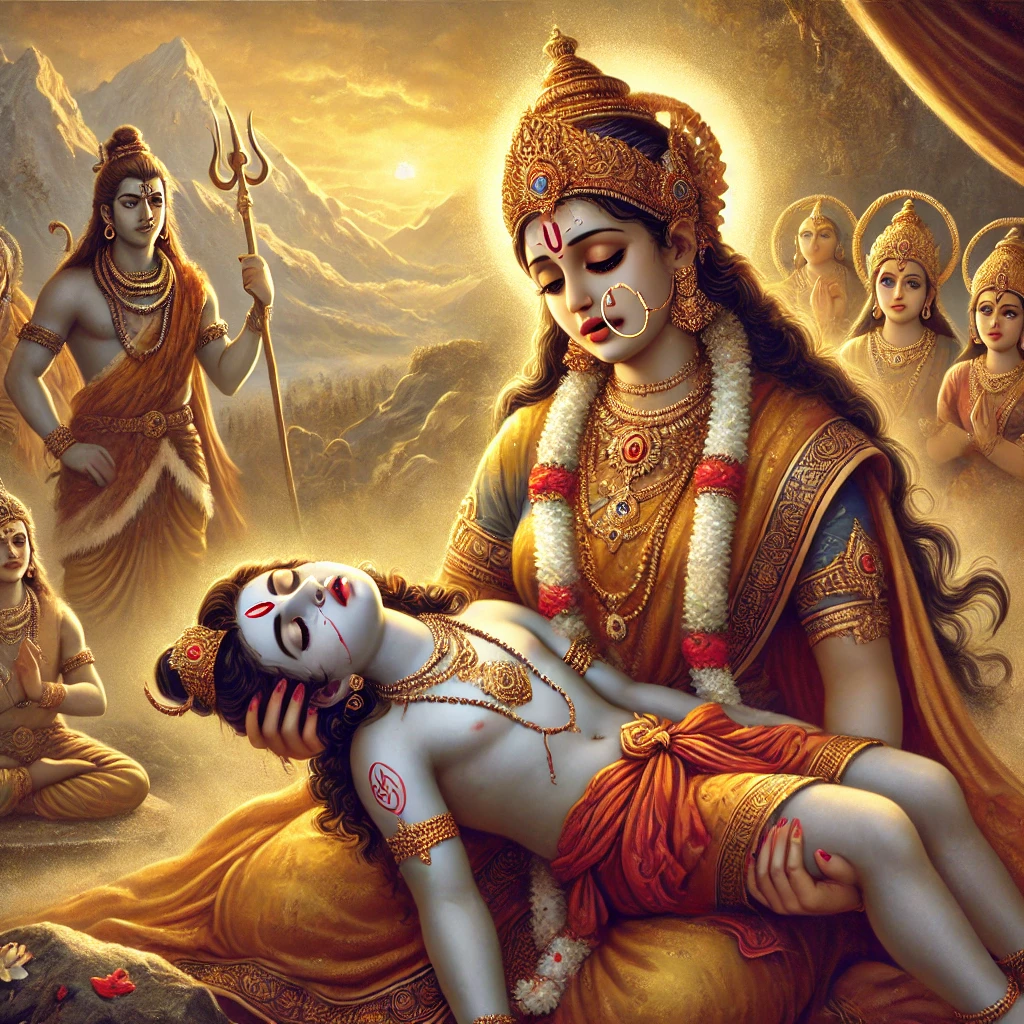
In a moment of uncontrollable rage, Lord Shiva swung his trident and severed Ganesha’s head. As soon as the act was done, Parvati emerged and saw the lifeless body of her beloved son. Overcome with grief, she wept bitterly, her sorrow shaking the heavens. The gods pleaded with Shiva to make amends.
The Divine Resolution
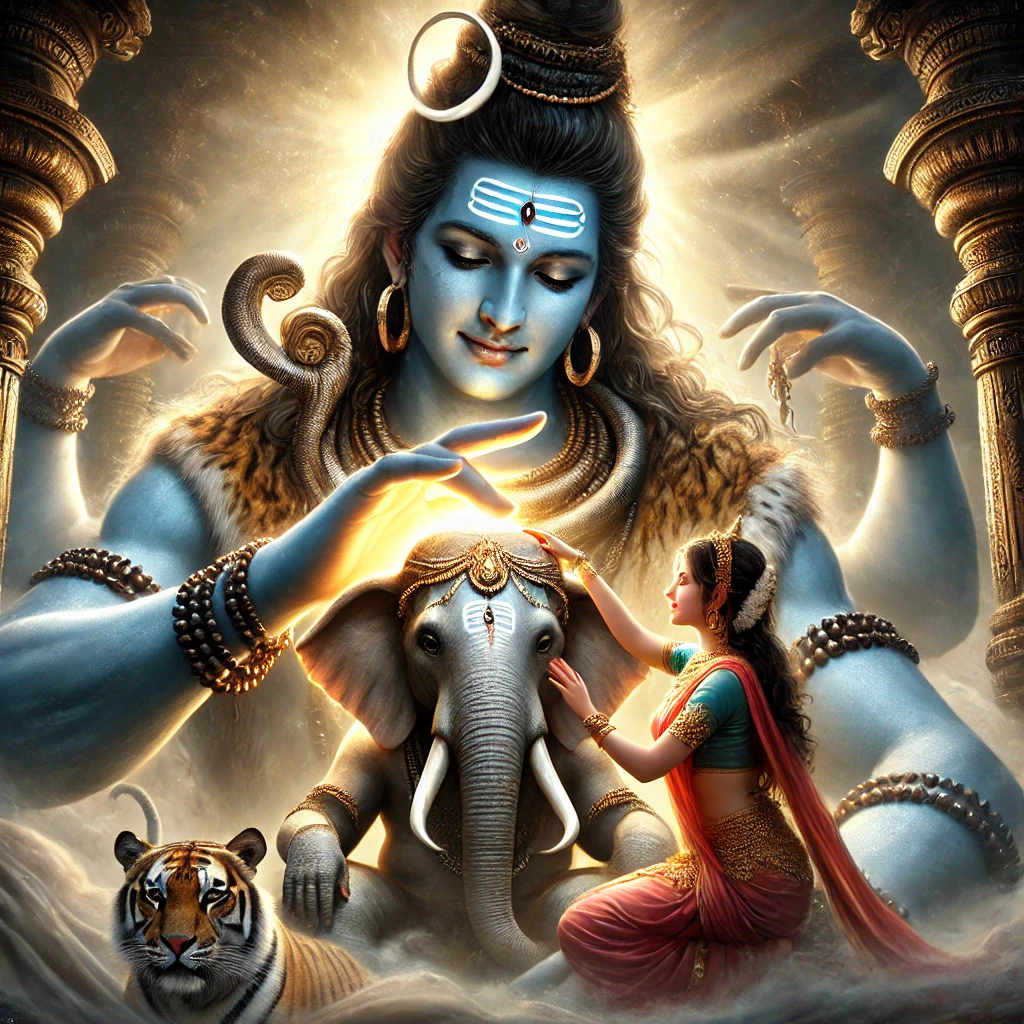
Shiva, realizing his mistake, sought a solution. He instructed his followers, the ganas, to find the head of the first living creature they encountered facing north. They soon returned with the head of a mighty elephant. With his divine power, Shiva placed the elephant’s head onto Ganesha’s body and restored his life. As soon as he awoke, Ganesha was blessed by all the gods, and Shiva declared him as the leader of his ganas (Ganapati) and the remover of obstacles (Vighnaharta).
The Celebration of Ganesha’s Rebirth
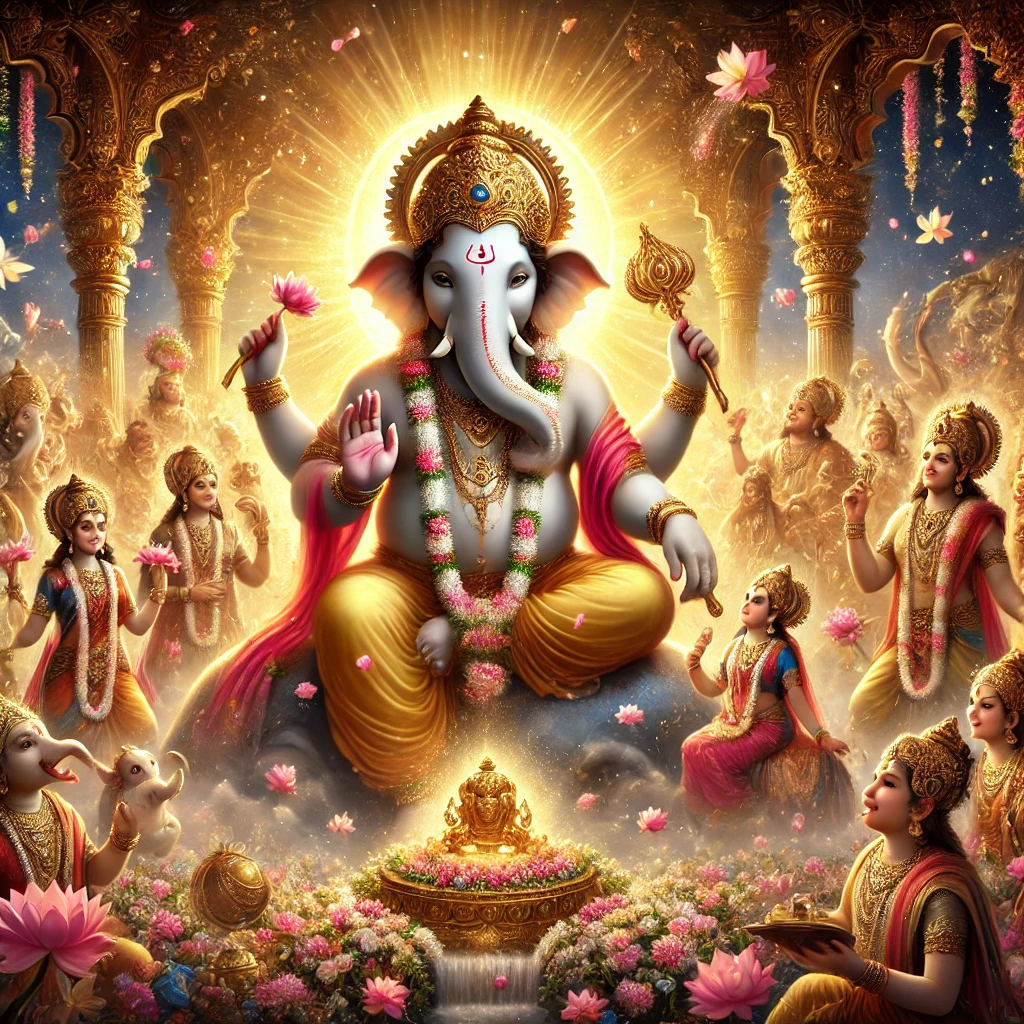
All the celestial beings rejoiced at Ganesha’s rebirth. Parvati’s sorrow turned into immense joy. Lord Vishnu, Lord Brahma, and all the gods bestowed their blessings upon him. From that day forward, Ganesha became the first deity to be worshipped before any auspicious event, ensuring success and removing obstacles from the path of devotees.
The Significance of Ganesha’s Birth
This story teaches us valuable lessons:
- Obedience & Duty: Ganesha remained loyal to his mother’s instructions, even in the face of powerful opposition.
- Forgiveness & Wisdom: Shiva recognized his mistake and corrected it, ensuring that Ganesha was honored eternally.
- Transformation & Strength: Ganesha’s elephant head symbolizes overcoming challenges and embracing change with wisdom.
(FAQ’s)
1. Why did Parvati create Ganesha?
Parvati created Ganesha to guard her private chambers while she bathed, ensuring her privacy.
2. Why did Lord Shiva cut off Ganesha’s head?
Lord Shiva, unaware that Ganesha was Parvati’s creation, became furious when the boy denied him entry, leading to the tragic decapitation.
3. Why was an elephant’s head chosen for Ganesha?
Shiva’s ganas were sent to find the first living being they encountered facing north, which happened to be an elephant.
4. What does Lord Ganesha symbolize?
Ganesha symbolizes wisdom, success, and the removal of obstacles, making him the first deity worshipped in Hindu traditions.

